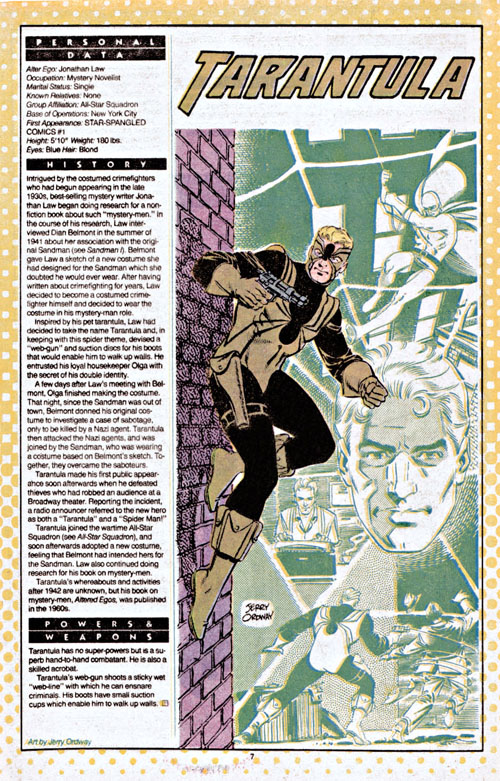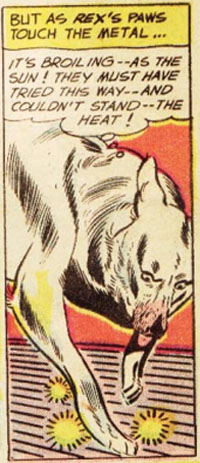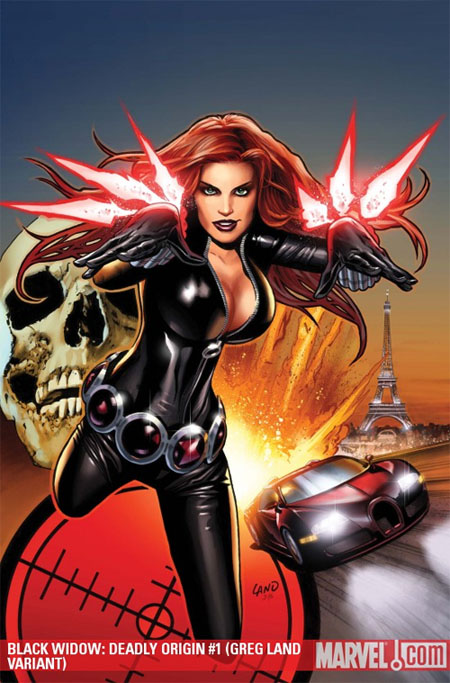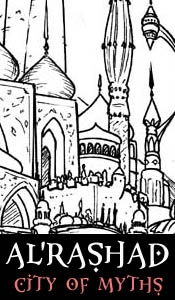So last time I was, as the grandfathers say, rappin’ at you kids, I was surprised that DC has decided to turn Superman/Batman into a look back at specific past events. I asked, “Why is DC pushing ‘untold tales” when ‘untold tales’ are rarely sales successes?”
We might ask a broader question, “Why does anybody push ‘untold tales” when ‘untold tales’ are rarely sales successes?” In limited doses, they work. Take Batman: Year One, for example, or Matt Wagner’s retellings of Golden Age Batman stories. But try it as an ongoing, and Marvel couldn’t keep Untold Tales of Spider-Man afloat, nor X-Men: Hidden Years, nor X-Men: First Class. Yet they keep publishing and canceling series like that.
The conclusion I’m drawing from this is that these series can’t be motivated by sales, because ongoing series set in past continuity are, with few exceptions, proven failures. Instead, they’ve got to be driven by creators and editorial wanting to fill in those blanks.
There are any number of reasons creative types might want to do this:
“Year One” type stories and others are intended to build the myth. Since superhero characters are patchwork creations, built over decades according to no set plan from the beginning, these stories look back at their superhero with the benefit of years and years of concept refinement and try to square it all away. Alfred, for example, doesn’t appear in Batman comics until four years or so into publication, but myth-building stories recognize Alfred as vital to the Batman concept and go back to plug him into the mythology from the beginning. How did Batman and Commissioner Gordon meet? Where did Superman’s costume come from? These stories are all about finding meaning in stories where they did not originally exist. See also: Claremont’s Classic X-Men backups.
Then of course, there’s simply wanting to play in the sandbox. Untold Tales of Spider-Man, it seems, comes largely from Kurt Busiek absolutely loving the early Lee/Ditko Peter-Parker-in-high-school stories and wanting to see more of them. There’s not too much myth-building in the stories (of course, you could argue those early Spider-Man comics don’t really need them); there are a few nods and prods to readers who know their history, but they largely exist as entertaining stories on their own merit. The same with Hidden Years, which really only exists because John Byrne loved the Thomas/Adams era original X-Men lineup and wanted to make supplementary issues to the originals.
There’s a third reason that can be related to either of the two above, namely wanting to leave one’s mark. Of course, everyone who works on an existing superhero comic wants to contribute to the legacy, but I imagine it’s far more difficult to pull a Frank Miller on Daredevil and reinvent the concept in the current day than to pull a Frank Miller on Batman and retroactively contribute to the origin of the concept. If I go in and say, add a reporter to the Daily Planet staff who took Clark Kent under his wing upon his arrival in Metropolis, not only did I add something new to the Superman mythos, but I’ve made it so it was there all along. Of course, the difference between this and myth-building, or even just playing in the sandbox, is largely a matter of personal taste. If you love the story, the creator is trying to enrich the concept; if you hate it, they’re just pulling a cheap ploy so that they’ll be mentioned in the Wikipedia article for the character one day.
But I find the worst reason is the continuity patch. Say, in Heroman #347 (1982), Dr. Villain says he’s lost the ability to shoot lasers out of his eyes, but when Dr. Villain appears next in Brooding Vigilante #298 (1986), he’s got laser-eyes again with no explanation. There are a lot of writers who are just itching to tell the story of how Dr. Villain got his powers back. Now, it’s entirely possible that there is a really good story you could get out of that; if that’s what’s motivating you to write, you might have something there. But if you’re writing that story just to fix the mistake, aren’t you just mending instead of creating?
Now, it sounds like Superman/Batman is falling into the “continuity patch” category, which does not bode well. I have a sneaking suspicion that this move is just to keep the title going, and that DC has some big plan in mind for when Superman comes back to Earth and Bruce Wayne is Batman again. But even so, they could just as easily keep it out of continuity or do Dick Grayson/Mon-El team-ups. Why this?
Well, I’m betting somebody just wanted to do it, even if nobody’s demanding it. And think about it — that’s a rare thing indeed for DC or Marvel, where sales usually drive everything. We comic fans always say “If you’d just stop buying (company-wide crossovers/books with pointless character deaths/team books with Wolverine shoehorned in them), then they wouldn’t make them anymore!” Which is probably true, but surely these past-continuity stories creative teams keep pushing are the exception to that rule. Because it’s been demonstrated that fans’ demand for such books is far, far less than what writers and editors are willing to supply.
There might be a case to be made, then, that “untold tales” are some of the most personal, most passionate works by superhero writers (and in turn by the editors who greenlight them), because you can be damn sure you’re not doing this for sales. Even if it is just a wretched story to fix some continuity error nobody really cares about, it shows a personal investment relatively untouched by the business end of things.
I’m not saying it’s good or bad, exactly. But it is rare, and it is worth taking a second look at, I think. Next time you pick up an out-of-continuity book set in the past, really think: Why does this comic exist?
You may find that issue of Captain America: Sentinel of Liberty more interesting than you’d originally thought.







